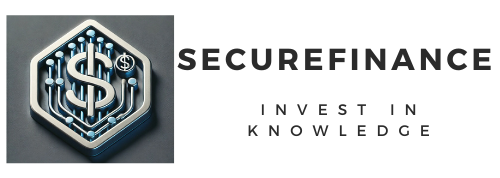
Flying thousands of feet above the ground comes with unmatched experiences—but it also comes with unique financial challenges. While the pay in high-end airlines can be lucrative, the career of a pilot or flight attendant is demanding, unpredictable, and often limited in duration due to age restrictions and health standards. That’s why understanding the best retirement investment options for pilots and flight attendants is not just wise—it’s essential.
Financial Challenges in Aviation Careers
Aviation professionals enjoy incredible benefits, travel perks, and often substantial incomes, particularly with elite carriers like Emirates, Qatar Airways, Singapore Airlines, or Delta. However, their careers are also shaped by strict retirement ages, burnout risks, long-distance lifestyles, and volatile airline industry economics.
Moreover, time away from home can make it difficult to engage in conventional financial planning. The answer? A robust, automated, and diversified retirement strategy.
Why Retirement Planning is Crucial for Airline Professionals
Let’s not sugarcoat it—airline careers have an expiry date. Pilots typically must retire by age 65 due to regulatory requirements. Flight attendants may continue longer, but often opt to retire earlier due to the physical demands. Thus, your window to save and invest is finite and fast-moving.
Retirement planning gives you options:
-
Retire early and live your dream life.
-
Transition into a consulting or training role.
-
Fund healthcare without stress.
-
Support your family even after flying days end.
Understanding Market Volatility in Airline Retirement Planning
The aviation sector is especially sensitive to global shocks—think oil prices, pandemics, or geopolitical tensions. Pilots and flight attendants, whose job security may hinge on these factors, must account for investment volatility as well.
That’s where diversification and liquidity come into play. Having access to funds that aren’t overly exposed to airline stocks or high-risk sectors is key. Building a portfolio that includes conservative and growth assets is not just smart—it’s survival strategy.
Airline Pension Plans: How They Work
Many legacy airlines offer pension schemes, particularly for pilots. But these are becoming less common and may not be sufficient alone. They are typically:
-
Defined benefit plans: Pay a fixed monthly income based on salary and years of service.
-
Defined contribution plans: Depend on how much was contributed and how well investments performed.
Always read the fine print. Some pensions have clauses tied to inflation, age, or service continuity. It’s critical to combine these with personal investment plans.
401(k) Retirement Plans for Airline Employees
Most U.S.-based airlines offer 401(k) plans with employer matches up to 5–10%. Maxing out your contribution (currently $23,000/year if over 50) can significantly boost your savings due to:
-
Tax deferral
-
Compound growth
-
Employer matching
Don’t leave free money on the table. Enroll, automate, and review your allocations every year. Consider target-date funds if unsure where to start.
Traditional vs Roth IRA: What Should Pilots Choose?
IRAs offer flexibility beyond employer plans. Here’s a breakdown:
| Type | Tax Now or Later? | Best For |
|---|---|---|
| Traditional IRA | Tax-deferred | High earners expecting lower taxes in retirement |
| Roth IRA | Taxed upfront | Younger crew members or those expecting higher taxes later |
Roth IRAs also let your money grow tax-free forever—an attractive option for those starting early.
Self-Employed Options for Freelance or Contract Pilots
Private aviation, corporate gigs, and instructor roles often fall outside traditional employment. In this case, consider:
-
SEP IRA – Up to 25% of your income, capped at $69,000 (2024).
-
SIMPLE IRA – Easy to set up, lower limits, best for small aviation businesses.
-
Solo 401(k) – Ideal for solo-preneurs, combines high limits with flexibility.
These plans can supercharge retirement savings while offering substantial tax relief.
HSAs: A Retirement-Friendly Health Investment
Health Savings Accounts (HSAs) are not just for medical bills—they are stealth retirement accounts.
Benefits:
-
Triple tax advantage (deductible contributions, tax-free growth, tax-free withdrawals for health).
-
Funds roll over year to year.
-
Use them post-retirement for Medicare or long-term care costs.
For flight attendants exposed to constant health stressors, this is a goldmine.
Real Estate Investment Strategies for Airline Crews
With their high travel frequency, pilots and flight attendants can tap into real estate with passive approaches:
-
Turnkey rentals
-
Short-term Airbnb properties
-
REITs (Real Estate Investment Trusts)
The key is to invest in management services or hands-off platforms to avoid tenant headaches while flying.
Passive Income via Real Estate Investment Trusts
If you prefer zero involvement in property management, REITs are your go-to.
-
Public REITs trade like stocks.
-
Private REITs often pay higher but have limited liquidity.
They provide steady dividends and growth potential without the burdens of physical property ownership.
Building Wealth Through Dividend Income
Dividend-paying stocks—like those in energy, telecom, or utilities—can generate consistent income post-retirement. Consider:
-
Dividend Aristocrats (S&P 500 companies with 25+ years of dividend increases)
-
ETFs that track dividend indexes
These provide quarterly cash flow and compound growth if reinvested.
Why Index Funds Are Popular Among Airline Staff
Index funds are low-cost, diversified, and hands-off—perfect for aviation pros without time to track stocks.
Popular options:
-
S&P 500 (VOO, SPY)
-
Total Market Index (VTI)
-
International Index (VXUS)
Invest regularly, ignore the noise, and let compounding do its work.
Comparing Mutual Funds and ETFs for Retirement
Both are useful, but there are key differences:
| Feature | Mutual Funds | ETFs |
|---|---|---|
| Fees | Higher | Lower |
| Trading | Once/day | Real-time |
| Taxes | Less efficient | More efficient |
ETFs often win due to tax advantages and flexibility—ideal for tax-sensitive airline professionals.
Fixed vs Variable Annuities: Pros & Cons for Flight Crew
Annuities guarantee income—at a cost. Here’s a quick look:
| Type | Pros | Cons |
|---|---|---|
| Fixed Annuity | Guaranteed payout, simple | Lower returns, inflation risk |
| Variable Annuity | Higher growth potential | Market risk, complex fees |
Only buy from reputable providers. Use annuities to supplement, not replace, other retirement tools.
Safe Haven: Bonds for Conservative Growth
As retirement nears, shift from growth to preservation. Bonds—especially U.S. Treasury or municipal—offer:
-
Steady interest income
-
Lower volatility
-
Tax advantages (for muni bonds)
They’re a shield against market storms.
The Must-Have Retirement Buffer: Emergency Funds
Despite high income, many aviation professionals lack an emergency cushion. Save at least 6 months of expenses in:
-
High-yield savings accounts
-
Money market funds
-
Short-term CDs
This ensures you won’t raid retirement accounts during turbulence.
Side Hustles That Build Retirement Security
Pilots and flight attendants often have flexible schedules. Consider:
-
Travel blogs
-
Aviation YouTube channels
-
Language tutoring
-
Real estate license
These add income and allow passion projects to blossom into profitable retirement ventures.
Retirement Investment for Globally Based Airline Staff
International crew should understand:
-
Currency risk
-
Double taxation
-
Expats’ investment restrictions
Using global brokerages and dual-tax treaties can prevent tax surprises and allow seamless global investing.
Tax-Deferred Investment Strategies for Pilots
Maximize:
-
Employer 401(k) match
-
Backdoor Roth IRAs
-
Tax-deferred annuities
-
HSA max contributions
These save today’s income while securing tomorrow’s needs—without a tax bomb later.
Beating Inflation With Investment Diversification
Inflation eats fixed incomes alive. Fight it with:
-
TIPS (Treasury Inflation-Protected Securities)
-
Commodities ETFs
-
Precious metals (Gold, Silver)
-
International exposure
Inflation protection is not optional—it’s oxygen for long retirements.
Using Robo-Advisors for Retirement Management
Pilots love automation. Robo-advisors like Betterment or Wealthfront:
-
Offer low-cost portfolios
-
Auto-rebalance
-
Provide tax-loss harvesting
Ideal for airline workers who want great returns without constant oversight.
When to Hire a Financial Planner
If you:
-
Earn $150K+ per year
-
Own multiple properties
-
Have dual citizenship
-
Lack time for investing
…consider a fee-only fiduciary planner specializing in aviation or expat finance.
Airline Unions and Retirement Perks
Unions can negotiate:
-
Enhanced pension contributions
-
Early retirement clauses
-
Retiree health insurance
Know your contract. Attend briefings. Don’t miss hidden gems in union-negotiated packages.
Planning Early Retirement from the Skies
Want to hang up the uniform at 55 instead of 65? Start early with:
-
High savings rate (25–40%)
-
FIRE-friendly portfolios
-
Geographic arbitrage (retiring abroad)
It’s possible—but you must plan ruthlessly and start now.
Diversifying Across Asset Classes
Don’t put all your retirement eggs in one basket:
-
Equities
-
Bonds
-
Real Estate
-
Alternatives (crypto, commodities)
Each smooths out the ride during financial turbulence.
Rebalancing: Keeping Your Investments Healthy
Review every 6–12 months. Adjust:
-
Equity vs fixed income
-
International vs domestic
-
Growth vs value
Stay on course despite market detours.
Ethical Investments for Eco-Conscious Airline Crew
ESG and green investments are gaining steam. Consider:
-
Clean energy ETFs
-
ESG-rated mutual funds
-
Social impact bonds
Fly green, invest green.
Budgeting for a Post-Flying Lifestyle
Know your numbers:
-
Monthly spending in retirement
-
Healthcare premiums
-
Travel budget
Create a retirement test run—live on your expected retirement budget for 3–6 months.
Estate Planning and Legal Documents Before Retirement
Have these in place:
-
Will
-
Healthcare proxy
-
Power of attorney
-
Beneficiary designations
Protect your legacy and ease the burden on loved ones.
Planning the Last Flight: The Exit Blueprint
Retirement isn’t a crash landing—it should be a smooth descent. Your checklist:
-
Calculate withdrawal needs
-
Confirm pension start dates
-
Ensure insurance coverage
-
Plan post-retirement activities
Retire with purpose, not panic.
You Can Also Read : Luxury Lifestyle to Retirement: Financial Planning for Elite Flight Crews
FAQs
When should pilots start retirement planning?
Ideally, in their 20s. But starting in your 30s or even 40s with aggressive saving can still yield excellent results.
Are 401(k) plans offered to international airline crew?
Not always. Many international airlines offer government-style pension schemes or none at all—hence the importance of personal investing.
Can flight attendants retire early?
Yes, many do. But early retirement requires a disciplined investment strategy and high savings rate.
Are annuities good for pilots?
They can provide guaranteed income, but often come with high fees. Use with caution and preferably with a financial advisor.
What’s the best investment for airline staff living abroad?
International mutual funds, REITs, and globally diversified ETFs managed through expat-friendly platforms like Interactive Brokers.
How should pilots handle investment taxes?
Use tax-advantaged accounts where available. Consider hiring a cross-border tax specialist if you earn abroad.
